The Story of Culture and Arts
- Image resource of Korean history
- Documents from History TextBooks
- Culture & Art Stories from Korean History
- Culture & Art Stories from Korean History - Korean
- National Institute of Korean History
- History net
- About the site
- Introduce
-
Numerous topics related to Korean culture and art are mentioned in middle and high school national history textbooks, but most of them are briefly described by era, making it difficult to understand their concepts, transition processes, and characteristics.
<Culture & Art Stories from Korean History> produces and provides video materials based on expert commentary on the flow, change process, characteristics and characteristics of each major topic in the field of culture and art in Korean history.

Scenario
The everyday life and lifestyles of people living here in Korea today! In other words, the trends and lifestyle patterns of a given time period. We call this “customs.”
In a time when photos and videos didn’t exist, how can we get a sense of what life was like? The answer lies in the paintings left by artists of the period. Let’s go on a journey into the world of Korean genre painting.
Genre Painting Begins with Painters of the Literati Class
The origins of genre painting go back to the prehistoric era. Images of various beasts and hunters carved into rocks reveal the life of the people at that time. We can also catch a glimpse of life during the Three Kingdoms period, particularly the Goguryeo kingdom, from murals. Murals commonly featured scenes of hunting or excursions.
In the early Joseon period, scenes depicting everyday life were drawn to provide the king a glimpse into the daily lives of the common people, or acted as aids for teaching Confucian doctrines. Genre painting was a style of painting popular during the late Joseon period. These paintings depicted scenes from contemporary life and thus were called sokhwa, or “worldly paintings.”
After the reign of King Jeongjo, sokhwa paintings were frequently adopted as an exam topic for chabi daeryeong hwawon of the Kyujanggak . You can guess just how great the demand for these paintings was at court.
As genre paintings were depictions of people’s lives, the genre paintings of the late Joseon period showed the everyday lives of both the common people and the yangban literati. And those behind the genre-painting trend were none other than painters of the yangban class.
Yun Duseo, a scholar and painter, made the working people the focal point of his paintings. It’s as if they took the beautiful scenery of a landscape painting but switched out the main protagonist with an ordinary working-class person.
Additionally, Jo Yeongseok was a literati painter who refused King Yeongjo’s request to paint the royal portrait of King Sukjong, yet was content with painting the lives of the common folk.
These two painters observed and painted the ordinary daily life of the common people of Korea, hoping to capture on canvas an idealized view of their lives and labor from the perspective of the ruling class.
But this style of painting changed drastically when painters Kim Hongdo and Shin Yunbok entered the scene.
“A waterfowl under a bridge is surprised by the sound of a donkey’s hooves and flies off. The donkey is surprised by the waterfowl suddenly taking flight, and a man is surprised by the surprised donkey. To paint such a picture, he has truly reached his full potential. - Kang Sehwang, Kim Hongdo’s teacher
Kim Hongdo painted with no purpose or ideal in mind. He was gifted at capturing the comical or fun moments in life and putting them to paper. His teacher Kang Sehwang cherished this gift.
Paint pictures to make people fall over in laughter. - Naegak illyeok (Journal of the Kyujanggak) Month 6, Day 13, Year 13 of King Jeongjo’s reign (1789)
As the reigning king, King Jeongjo, had ordered that all paintings be able to make one fall over laughing, the culture of appreciating and enjoying paintings had finally begun.
Indeed, the defining feature of genre paintings by Kim Hongdo (known also as Danwon), is the artist’s ability to capture these moments of hilarity even amidst difficult labor and to perfectly express them with his rhythmic and dynamic painting style.
Upon opening the book of paintings by Kim Hongdo, both women and children would erupt in side-splitting laughter, which was unheard of among past painters. - Imwon gyeongjeji (Essays on Rural Life and Economy) by Seo Yugu
The humor and satire of his paintings brought roaring laughter to many people of the day.
In his genre paintings, Shin Yunbok, also known as Hyewon, boldly chose to feature women, particularly gisaeng. He gave the patriarchal society of Joseon quite a surprise by drawing the entertainment of the yangban and the meeting of men and women in secret and sophisticated settings.
“During the reign of King Sunjo, when royal authority began to wane, the artist Shin Yunbok, also known as Hyewon, captured with accuracy the image of a society that had grown loose. His paintings depict the yangban in their moments of various social deviations (with gisaeng), and in what are I think his best works, he rendered his colors so delicately so as to appeal to a woman’s taste.” Lee Taeho, Visiting Professor / Myeongji University, Department of Art History
The end of the 19th century marked the opening of Korea’s ports and the introduction of genre paintings aimed specifically at foreigners. A popular artist of the period, Kim Jungeun (also known as Gisan), painted scenes from events that would spark curiosity among foreign visitors, such as weddings and funerals, public punishments, and the national service examination, among others.
“The native sketches were executed for me by a Korean gentleman, and are, I think, interesting as illustrations of the manners and customs of the country; it is to be regretted that more of the artist’s colouring could not be reproduced. - Alfred Edward John Cavendish, Korea and The Sacred White Mountain (1891)
At this time in history, all facets of Joseon life and society were of interest to foreigners. And nothing afforded them as good a view of Korean life as genre paintings.
Do Genre Paintings Offer a Look at Life of the Period?
Genre painting, one style of painting that enjoyed a renaissance in the late Joseon period!
The development of commerce and industry lead to the creation of a non-elite class with economic power. Interest in the culture of the commoner class began to split off and diversify in the art world. This was not something that only happened in Korea.
“In terms of Western art history, genre painting also emerged during the 17th and 18th centuries, and during the Ming and Qing dynasties of China and the Edo period in Japan, genre painting and even erotic painting evolved greatly. Through this kind of change in genre, art during the Joseon period now worked to show the immense importance the life of the average individual had by making them the subject of the paintings.” Lee Taeho, Visiting Professor / Myeongji University, Department of Art History
In genre painting, we see the thinking and lifestyle of people of that period. Let’s take a look at life in the late Joseon period through the lens of genre paintings.
In Kim Hongdo’s paintings, not only farming scenes, but also other commoner livelihoods, including fisheries, handicrafts, and commerce, were taken as subjects. In this painting of a blacksmith, you see the different roles of the young apprentices and their master.
We also see people processing tobacco leaves, a popular item in the late Joseon period. We see the tobacco leaves being dried before being chopped finely. Despite the grueling work in the summer sun, the tobacco farmers seem happy to have an abundant harvest.
Performances of a dance trope with a samhyeon yukgak ensemble were also wildly popular among the people. The samhyeon yukgak is a music ensemble comprised of six traditional musical instruments, including the hyangpiri, daegeum, haegeum, janggu, and buk. Such groups held concerts or performed for folk festivals.
Here we see a father weaving a straw mat, but the hat on his head is that of a member of the yangban class. In the late Joseon period, yangban literati who had lost their wealth had to work to earn a living, but their children’s education continued.
When you look at Shin Yunbok’s genre paintings, you get a good idea of what sorts of things the wealthy “middle people” and the yangban bought or did for fun.
A painting capturing the popular activity of the day, Han River boat rides!
A large boat with musical performers and gisaeng accompaniment! If you take a look at the scholar dressed in mourning with his white belt, you can see the trend of extravagant spending that plagued the upper class.
Men standing while drinking, this appears to be a depiction of a typical tavern scene. During the reign of King Jeongjo, who lifted the prohibition order, the number of taverns and entertainment halls grew in the capital of Hanyang. Endless fights broke out at these bars.
“I think there is great historical significance in the interest genre painting had in the lives of the common people. (it is because) The genre painting trend of the late Joseon period influenced folk art of the 19th century and then led to pop culture in the 20th and 21 centuries. I think in a way, late-Joseon-period genre paintings can be seen as a signal of change from below.” Jeong Byung-Mo, Professor / Gyeongju University, Department of Historical Artifacts
In this way, genre paintings capture the thinking and lifestyles of the Joseon people, and these tell us a great many stories today.
[Epilogue]
Must-Know Facts on Culture and Art in Korean History
1. Genre painting, also known as “sokhwa” (or worldly paintings), was one of the styles a chabi daeryeong hwawon was frequently quizzed on during King Jeongjo’s reign.
2. Genre painting of the late Joseon period enjoyed its heyday with the debut of painters Kim Hongdo and Shin Yunbok.
3. At the end of the 19th century, many genre paintings were made specifically for foreign travelers around the newly opened ports.
Fine Arts & Crafts
18 films-
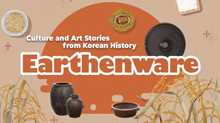 Earthenware08:28
Earthenware08:28 -
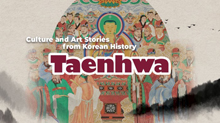 Taenghwa, or Buddhist Paintings in the Joseon Period08:36
Taenghwa, or Buddhist Paintings in the Joseon Period08:36 -
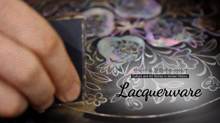 Lacquerware09:04
Lacquerware09:04 -
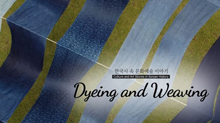 Dyeing and Weaving08:21
Dyeing and Weaving08:21 -
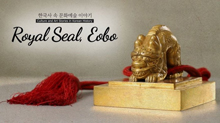 Royal Seal, Eobo07:53
Royal Seal, Eobo07:53 -
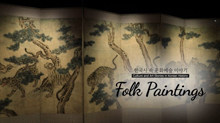 Folk paintings07:49
Folk paintings07:49 -
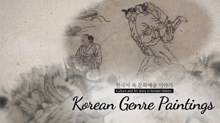 Korean Genre Paintings10:05
Korean Genre Paintings10:05 -
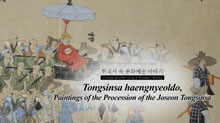 Paintings of the Procession of the Joseon Tongsinsa10:09
Paintings of the Procession of the Joseon Tongsinsa10:09 -
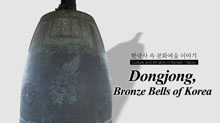 Dongjong, Bronze Bells of Korea08:50
Dongjong, Bronze Bells of Korea08:50 -
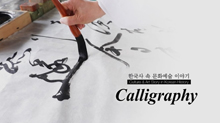 Calligraphy08:32
Calligraphy08:32 -
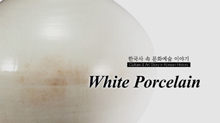 White Porcelain08:18
White Porcelain08:18 -
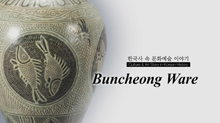 Buncheong Ware07:48
Buncheong Ware07:48 -
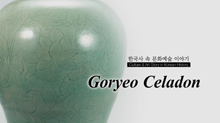 Goryeo Celadon07:54
Goryeo Celadon07:54 -
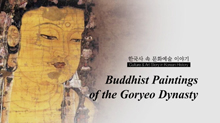 Buddhist Paintings of the Goryeo Dynasty07:57
Buddhist Paintings of the Goryeo Dynasty07:57 -
 Clay Figures, Figurines07:01
Clay Figures, Figurines07:01 -
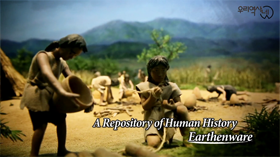 Clay Earthenware06:05
Clay Earthenware06:05 -
 Paintings of the Joseon Dynasty08:09
Paintings of the Joseon Dynasty08:09 -
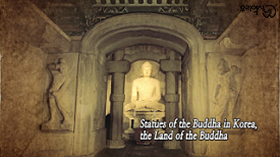 Statues of the Buddha in Korea09:03
Statues of the Buddha in Korea09:03

